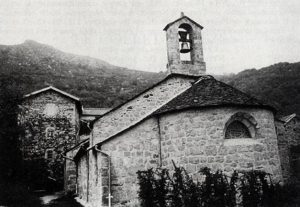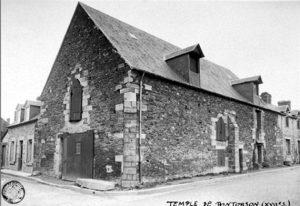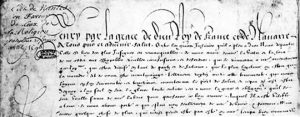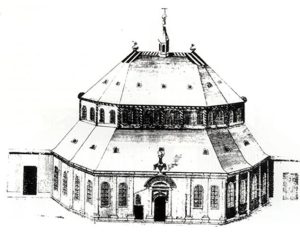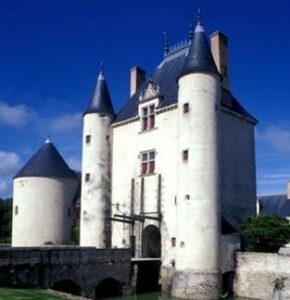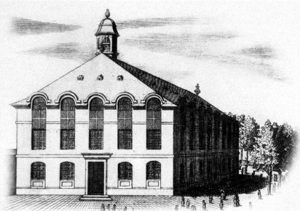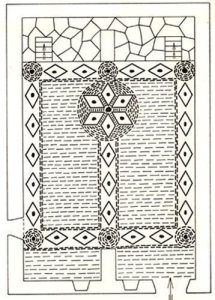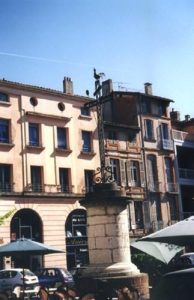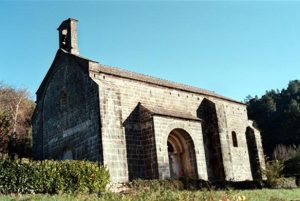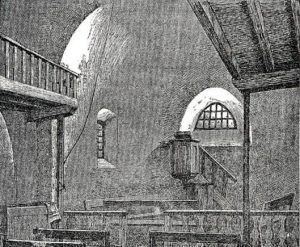The first services of worship
The Reformed first met in private homes.
Then, as they became more powerful, they requested public premises, abbeys, Catholic churches and adapted them to the Protestant service of worship.
In Catholic premises, Protestants not only did away with statues and sacred images, but also modified the architecture, replacing altars by a communion table around which the edifice was centred.
The following are examples of these changes :
- Saint-Jacques’ Church in Montauban,
- the Augustinian and Observantinian convents, as well as the churches of Sainte-Eugénie and Saint-Etienne de Capduel in Nîmes,
- the church of Saint-Fiary and the Jacobins’ convent in Agen,
- the churches of Saint-Barthélémy and of Sainte-Marguerite, the refectory of the Augustinian convent, and the former close tennis court in La Rochelle,
- the chapel of Sainte-Colombe in Gap,
- the church of Notre-Dame in Montpellier,
- several churches in Caen and Lyon.
New buildings
Somewhat later, the Reformed began building new edifices, paid for by the communities and – after the Edict of Nantes in 1598 – situated outside the cities and, for Paris, more than five leagues away.
These new constructions comprised :
- parish community churches, as in Lyon, Rouen, Charenton,
- manorial chapels, as in Chamerolles,
- existing buildings modified and used as temples, as in Poët-Laval.
The edifices had to be very spacious and seat a great number of worshippers. They were meeting places called “temples” in order to denote their religious usage and distinguish them from Catholic places of worship.
The architectural plans were of the basilica type (e.g. Charenton, Montpellier, Nîmes…) or – following the example of more ancient times – of a circumferential pattern (e.g. Lyon, Caen, Rouen). As opposed to dark cathedrals, the light in such temples streamed in through wide openings
The materials used were of local origin, as for instance stone from Ile de France in Charenton, bricks in Montauban, flint and wood in Dieppe and Rouen, schist and quartz in Collet-de-Dèze. The same rule was applied to roofing : slates in Dieppe and tiles in Lassalle.
The indoor architecture focused on hearing rather than on seeing. Central to the edifice were the communion table and the pulpit from where the pastor read the Word of God.
Whichever architecture was adopted, – of the “basilica” or of the “central” pattern – seating capacity was increased by tribunes built all around the building. Worshippers were seated in pews placed in circles around the communion table and the pulpit.
Ornamental details
These were reduced in number, since a place of worship must be free of idolatrous imagery.
But ornaments could consist of :
- civilian ornaments, royal armorial bearings (Lyon, La Rochelle), heraldry of governor Châtillon in Montpellier,
- religious ornaments such as the Tables of the Law in Chamerolles, or biblical verses in Charenton, Nîmes or Montauban.
Ceilings differed from the traditional vaulting type. For reasons of time and cost, woodwork (Montpellier and the temples of the Cévennes area) or panelling (La Rochelle and Charenton) were chosen.
Some temples still exist
Two major campaigns for the destruction of temples were launched, one in 1660 and another in 1680 ; a third campaign followed the Revocation in 1685.
Very few temples were spared after the Revocation in 1685 ; among them feature the temples of Collet-de-Dèze (Lozère) and Poët-Laval (Drôme). The temple of Vialas (Lozère) was not to be destroyed but for 50 years it was not used for Protestant services ; the same applies the one in Sainte-Croix-Vallée-Française (Lozère).
Thanks to iconography, some temples that played a major role in Protestantism during the 16th and 17th centuries, are still known – such as the temples of Lyon, Petit-Quevilly near Rouen, and La Rochelle.
In 1598, the Edict of Nantes had stipulated : “Places of worship or temples, built with permission by adherents of the pretended Reformed Religion, may be lofty of style and may only hold worshippers. They are not to be built like churches, nor may they have towers or high steeples”.



